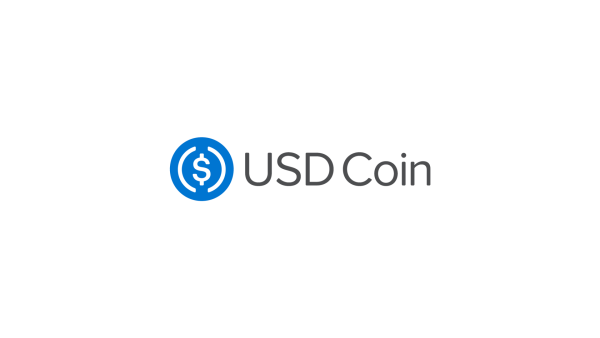USD Coin (USDC) is a digital stablecoin pegged to the United States dollar and runs on Ethereum, Stellar, Algorand, Solana, Tron and the Hedera Hashgraph system. It’s managed by a group called Centre, which was founded by the company and includes members from Coinbase (COIN.Q) and the Bitcoin mining giant, Bitmain, as investors.
For the rest of us, we can think of USDC as functioning the same way that Tether (USDT) does, but without being evil. Why is it not evil? Because it’s not backed by liars. Circle claims that each USDC is backed by a dollar held in reserve, or by other “approved investments.” Even though it doesn’t detail what these approved investments are, the company is regularly attested (but not audited—which is noteworthy and different) by the Grant Thornton accounting firm, which traditionally has been more than we can say for Tether. Tether recently got on the attestation bandwagon, likely after USDC started looking like a safer bet, but we’ll get into that a little later.
You can also find the attestations on Centre Consortium’s website.
Here’s how you exchange your greenbacks for USDC:
- A user sends US dollars to the coin issuer’s bank account.
- The issuer uses a USD Coin smart contract to create the equivalent amount of USD Coin.
- The newly minted USD Coins are sent to the user and the substituted US dollars are held in a reserve.
The process of exchanging USDC into US dollars is the same way, just in reverse order.
Now let’s compare mythologies:
When choosing which one to go with (or any stablecoin for that matter – Binance has one for example) you absolutely need to compare the underlying companies.

USDC
USDC is powered by the ERC-20 smart contract on the Ethereum blockchain and supported by the blockchains listed above. It’s open-source, which gives it transparency and makes it a verifiable stablecoin. The stablecoin is issued by American institutions, giving it stability and safety, but USDC is afterall a centralized stablecoin, which means that Centre theoretically holds absolute control over it and its future. If Circle goes tits-up then USDC goes with it.
USDC is starting to show up everywhere. Lots of institutions have adopted USDC for payments. Visa now supports it as a transaction settlement through the crypto.com exchange as of March. It also acts as a solution for transactions on the Ethereum blockchain, and has been showing up widely in DeFi
USDT
Here’s what we wrote about USDT earlier this year:
“Tether originated with the company Tether Limited, itself iFinex, which also owns the Bitfinex exchange. The original idea started with a white paper published online early in 2012 that described the possibility of building new currencies on top of the Bitcoin protocol. The idea had many names over the years, starting with Mastercoin, and then Omni and RealCoin, before landing on Tether. The first tokens were minted in October 6, 2014, on top of the Bitcoin blockchain, using something called the Omni Layer Protocol.
In January 2015, Bitfinex, one of the largest crypto-exchanges in the world, listed Tether on their platform. Ifinex swore up and down at the time that Tether and Bitfinex were separate, but the Paradise Papers leaked in November 2017 pointed directly at iFinex bigwigs Philip Potter and Giancarlo Devasinni as being responsible for setting up Tether Holdings Limited in the British Virgin Islands.”
That’s lie #1.
As of this year USDT is the most heavily traded stablecoin in the market. It presently sits as the fourth largest coin by market cap with a market cap of $77 billion, and operates on Ethereum, Bitcoin, Tron and EOSIO.
The fact that market cap could also largely be hot air is lie #2.
It’s not entirely sure how much cash they have to support their fluctuating coin supply. They say one to one (including supplementary assets and other reserves), but of course they do, and there’s a sweet $1 million bounty put out by Hindenburg Research if anyone can provide definitive proof.
There have been some developments we should mention. Tether recently published an attestation report detailing its reserves and try to come clean and transparent. More than half is in commercial paper, which is a form of short-term corporate lending and the rest is fiduciary deposits, cash, T-bills and reverse repo notes.
USDC—sixth in size by market cap, and two behind Tether—has a vastly cleaner reputation as they haven’t been indicted by any Attorney General, anywhere. Unlike Tether. Tether has also done their best to cover up that they were ripped off by a Panamanian payments process called Crypto Capital to the tune of $850 million. That’s lie #3.
They paid an $18.5 million fine after losing $850 million, and they’re still doing business—lots of business—proving that people don’t do their due diligence.
So let’s recap:
- Number of lies USDC/Circle has told: 0
- Number of lies USDT/Tether Limited has been caught in: 3
- Number of dollars USDC/Circle has lost: 0
- Number of dollars USDT/Tether Limited has lost: Close to $1 billion that we know of.
- Number of indictments USDC/Circle has had: 0
- Number of indictments USDT/Tether Limited has had: At least one. Probably more.
It baffles me that USDT still enjoys the support it does when USDC is clearly the superior choice.
—Joseph Morton


Leave a Reply